BPC 157: Benefits, Side Effects, Dosage, and More
 Disclaimer: BPC (body protective compound) 157 has not been authorized by the FDA and is intended for research purposes only. If you have any queries or concerns, Dr. Touliatos is currently available for consultation.
Disclaimer: BPC (body protective compound) 157 has not been authorized by the FDA and is intended for research purposes only. If you have any queries or concerns, Dr. Touliatos is currently available for consultation.
What is BPC 157?
BPC 157 is a peptide composed of 15 amino acids and is naturally present in human gastric juice (1). Thus, BPC 157 possesses gastrointestinal protective properties, including alleviation from ulcers, bowel issues, or Crohn’s disease.
- BPC 157 has the potential in medicine to act as an effective systemic healing agent, whether administered by injection or orally.
- We have found BPC 157 to produce notable healing outcomes. One of our patients with autoimmune disease had difficulty walking down the stairs due to joint stiffness and reduced blood flow. However, after 2 weeks of BPC 157 supplementation, she can walk down the stairs comfortably without holding on to the banister for the first time in 20 years.
Contents
- 1 What is BPC 157?
- 2 What Are the Benefits of BPC 157?
- 3 Recommended BPC 157 Source
- 4 What Are the Side Effects of BPC 157?
- 5 BPC 157 Dosage
- 6 BPC 157 Reviews
- 7 Recommended BPC 157 Stack
- 8 Where Can Researchers Buy Injectable BPC 157?
- 9 Can BPC 157 Improve Erectile Dysfunction?
- 10 Are BPC 157 Injections More Effective Than Oral Delivery?
- 11 BPC 157 Capsules
- 12 BPC 157 and TB-500
- 13 Is BPC 157 Legal?
- 14 Conclusion
What Are the Benefits of BPC 157?
- Wounds and tissue healing
- Lowers blood pressure
- Muscle recovery
- Pain reduction
- Reduction in fat mass
- Mild anabolic effects
- Anti-aging
- Increased well-being
BPC 157 has a significant positive impact on the central nervous system (CNS), muscles, tendons, and inflammation. It also has a profound effect on wound healing and tissue damage, commonly caused by corticosteroid use.
We have found BPC 157 to have cardioprotective attributes, inducing angiogenesis (new blood vessel formation).
BPC 157 is gaining traction in the fitness community among those seeking to heal from injuries commonly sustained when lifting heavy weights.
- Andrew Huberman, PhD, describes the effects of BPC 157 as “remarkable,” based on his personal experience of it healing his L5 root compression injury.
- He sustained the injury after performing deadlifts and was not able to heal following numerous massage and electric therapy sessions. However, after “2 injections of BPC 157,” he was pain-free with all symptoms alleviating.
BPC 157 also enhances muscle recovery, enabling increased training volume and frequency while alleviating soreness.
BPC 157 is an anabolic peptide; thus, it increases muscle hypertrophy and strength while decreasing adipose tissue (fat mass).
Similar to other peptides that enhance growth hormone levels, we have observed BPC 157 to stimulate collagen synthesis, inducing anti-aging effects.
BPC 157 has substantial analgesic effects by elevating dopamine and serotonin levels in the brain. Administering BPC 157 near the affected region may also lead to a reduction in scar tissue, as it expedites the body’s healing response.
The elevation of these two reward system neurotransmitters (dopamine and serotonin) has resulted in BPC 157 producing antidepressant effects in some of our patients. They have also reported brain fog and cognitive clarity improving as a result of this cerebral shift.
- Dr. William A. Seeds has over 10 years of experience observing the effects of peptides, including BPC 157. He says he is “amazed” at how BPC 157 improves recovery in athletes.
- Dr. Seeds also states that peptides offer physicians “nearly miraculous opportunities” in the treatment and prevention of illness, injury, and disease.
Disclosure: We do not accept any form of advertising on Inside Bodybuilding. We monetize our practice via doctor consultations and carefully chosen supplement recommendations, which have given our patients excellent results.
Recommended BPC 157 Source
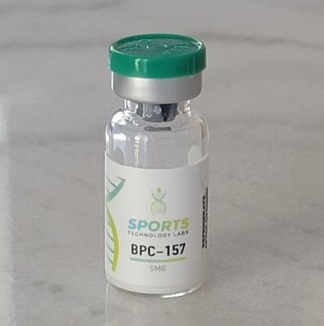
Sports Technology Labs formulates BPC 157 with a minimum purity level of 98%, verified by third-party certificates of analysis (COAs) issued to customers.
15% discount code: inside15What Are the Side Effects of BPC 157?
During the last 20 years, there has been limited research on BPC 157 (2). Clinically, we are not aware of any major side effects associated with this peptide.
We have had patients utilize BPC 157 for several years without reporting any noticeable adverse effects. However, long-term human trials are necessary in order to medically confirm the safety of BPC 157.
BPC 157 can cause injection site redness, medically referred to as erythema, in some users. This can be prevented by:
- Rotating injection locations
- Cleaning the vial and injection site with a 70% isopropyl alcohol swab
Below are several contraindications that should be considered before administering BPC 157.
Effects on Cancer Patients
BPC 157 is a growth agent; thus, it may potentially cause tissue proliferation similar to growth hormone. Therefore, it has been theorized that if an individual receives a cancer diagnosis, administering BPC 157 could potentially exacerbate their condition.
However, in research, we have seen peptides proliferate healthy cells and harm cancer cells within 30 minutes of administration (3). Consequently, 400-600 peptides are currently being reviewed for the treatment of various ailments, including cancer (4).
- Researchers are specifically proposing BPC 157 as a treatment for cancer patients. This move is in an attempt to prevent cachexia, which accounts for 20% of cancer mortalities (5).
- A 2020 study also concluded that BPC 157 inhibits tumor necrosis factor-α (6). Elevated tumor necrosis factor-α levels are responsible for the development of cancer cells and increased mortality.
Therefore, it is unknown whether BPC 157 will heal or harm cancer patients. Such outcomes may also be dependent on the specific cancer. However, it is evident from existing research that BPC 157 demonstrates some anti-carcinogenic effects.
Reduced Blood Pressure
- Our observations indicate that BPC 157 exerts a reductive effect on blood pressure.
- Consequently, individuals prescribed blood pressure medication ought to exercise caution regarding the potential of their blood pressure decreasing to deleteriously low levels.
- These changes may lead to sensations of dizziness or episodes of fainting if not adequately observed.
In contrast to other compounds that enhance growth hormone levels, we have not found BPC 157 to elevate blood sugar levels, thereby preventing potential increases in blood pressure.
BPC 157 does not appear to pose any toxicity to the liver, kidneys, or heart.
Cognitive Health
BPC 157 may affect mood post-cycle, as the peptide has a transient effect on serotonin and dopamine levels. Thus, neurotransmitters initially rise during supplementation, subsequently reverting to baseline levels upon cycle cessation.
BPC 157 has the potential to induce mild headaches in some individuals, although we have found this to be an uncommon side effect.
Histamine
- While not frequently observed, there have been instances where individuals have reported histamine reactions to BPC 157 during the initial stages of supplementation.
- We have found that commencing treatment with conservative dosages and gradually increasing the dose has demonstrated efficacy in mitigating histamine surges.
Worsened Gynecomastia
We had a patient with existing gynecomastia utilize BPC 157, and it exacerbated his condition. We hypothesize this to be related to the peptide increasing progesterone as a consequence of elevated growth hormone (GH) levels. GH raises progesterone via several pathways, including:
- Direct stimulation of human luteal cells
- Increased cyclic adenosine monophosphate (cAMP) levels
- Antiapoptotic effects
His condition improved promptly following cycle cessation, with his breasts restoring back to their pre-cycle size. This reversal may have been aided by his brief supplementation, having administered BPC 157 for 1 week. We have not had any male patients develop gynecomastia from BPC 157, but it may enlarge breast tissue in users already diagnosed with this benign disorder.
BPC 157 Dosage
An official therapeutic dosage for BPC 157 has not been established by a medical authority, as it is not currently FDA-approved.
- Anecdotally, we have observed positive results from users taking 500–1,000 mcg/day orally.
- Alternatively, a dosage of 400–600 mcg/day has proven to be effective when administered via subcutaneous injection in close proximity to the affected region.
| BPC 157 injection dosage | BPC 157 oral dosage |
|---|---|
| 500 mcg/day | 750 mcg/day |
BPC 157 dosages up to 500 mcg/kg are well-tolerated by rodents in clinical research, indicating the peptide’s low toxicity (7).
Some individuals cycle BPC 157, akin to steroids, while others administer it continuously.
Anecdotally, several of our patients have utilized BPC 157 for several months or years without any sign of toxicity. However, long-term trials are necessary to conclude the clinical safety of this peptide.
BPC 157 Reviews
The following reviews were published in our private Facebook group.
I have been deeply invested in using peptides like TB 500, BPC 157, Sermorelin, and CJC-1295/Ipamorelin over the years for growth hormone enhancement and overall recovery. I had really bad knee and back pain that put me out of commission for years; I could not exercise or do anything physical. Navigating the world of peptides was challenging initially, especially when trying to pinpoint reliable clinics and pharmacies that prioritize genuine care over mere profit. Determining the correct dosage, method of administration, and length of each treatment was a steep learning curve. What I came to understand was the power of complementing peptides with the right nutrition and incorporating targeted mobility and strength training for recovery. This holistic approach not only accelerates healing but also ensures long-lasting benefits. Combining specific peptides for synergistic effects further amplified my results. Thanks to meticulous research and a tenacious spirit, I shifted from a sedentary, pain-ridden lifestyle to feeling more alive and being in peak physical shape, even in my 40s. The transformation peptides offered me are nothing short of miraculous. I am eager to share more and learn from all of you!
After trying several peptides individually, I found that only the synergistic combo of BPC 157 and TB-4 worked on my connective tissue issues. I have only injected subcutaneously, and my hip which used to pop out of place doesn’t anymore. Also, I have read that it doesn’t matter where you inject, though I’ve had the best results when injecting near the area.
I have arthritis in my legs and hips, and I have been injecting there with good results. My ring finger started acting up and would be very stubborn to bend when I wanted to (very jerky). I injected once in the finger, and now it doesn’t do that. It’s only been two weeks since I injected my finger, but so far, so good.
Recommended BPC 157 Stack

When BPC 157 is stacked with TB-500, we observe amplified healing effects that are approximately 50% greater vs. BPC 157-only treatment.
Thus, we recommend this peptide duo for enhanced and accelerated recovery.
15% discount code: inside15
Where Can Researchers Buy Injectable BPC 157?
- Sports Technology Labs 🇺🇸
- Amino Asylum 🇺🇸
- Peak Body 🇬🇧
- Deus Power 🇪🇺
Sports Technology Labs

| Website | Price | Country | Discount code (15%) |
|---|---|---|---|
| Sportstechnologylabs.com | $59.99 | United States | Inside15 |
Sports Technology Labs’ BPC 157 has proven to be our most reliable source for US customers, as their formulation guarantees a minimum of 98% purity. However, the percentage we’ve seen usually exceeds this number. Our most recent BPC 157 certificate of analysis from Sports Technology Labs shows this, as it confirms a purity of 99.9%.
Researchers located outside the United States must seek an alternative provider to Sports Technology Labs, as they have ceased international shipping due to customs-related issues (including seizures and delays).
Amino Asylum
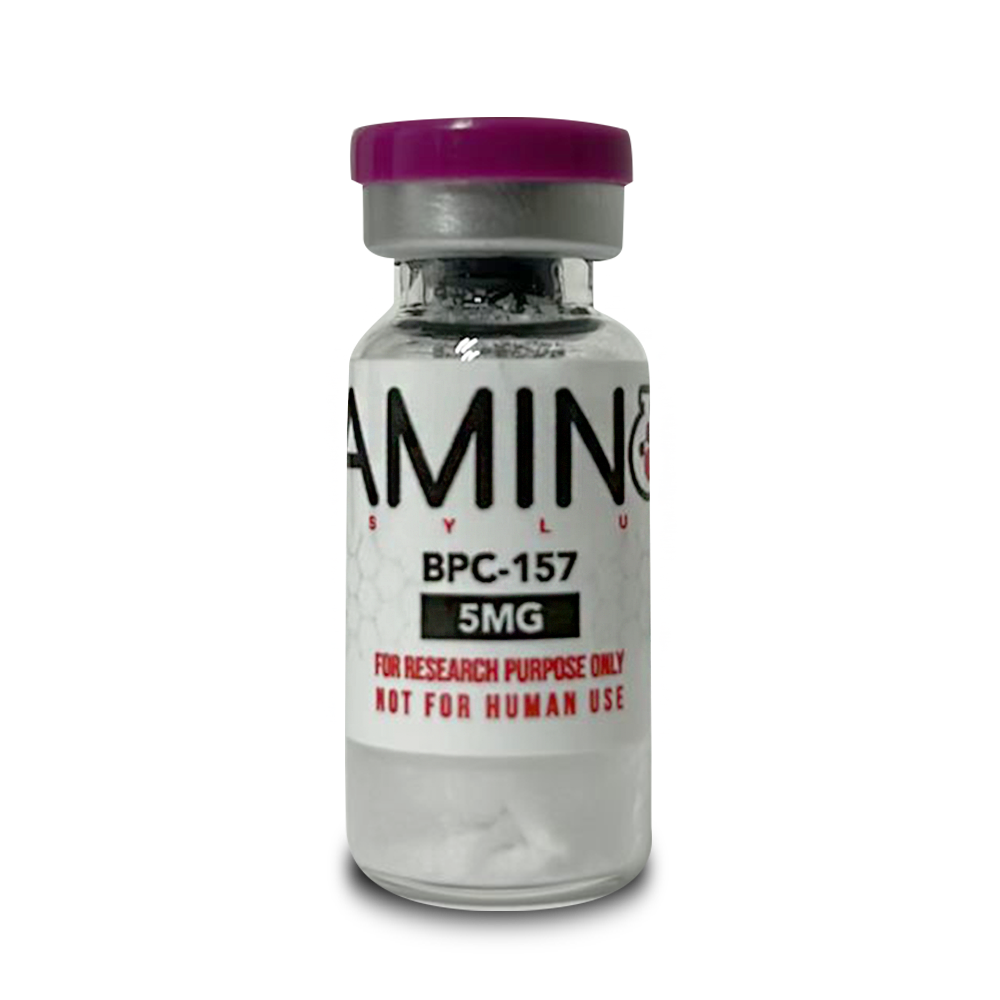
| Website | Price | Country |
|---|---|---|
| Aminoasylum.shop | $34.99 | United States |
- Amino Asylum offers a more economical option for customers in the United States, with their BPC 157 available for $25 lower than that of Sports Technology Labs.
- Nonetheless, lower-priced peptides pose certain risks, as Amino Asylum does not provide customers with certificates of analysis.
Thus, there is no purity guarantee. Our experience with Amino Asylum has generally been positive. However, we are aware of sporadic reports of ineffective products.
Peak Body
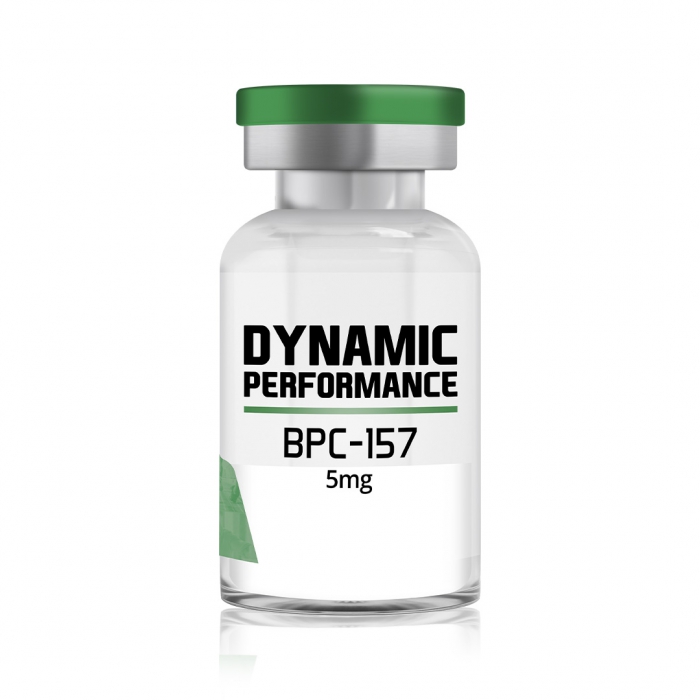
| Website | Price | Country |
|---|---|---|
| Peakbody.co.uk | £19.95 | United Kingdom |
- Peak Body is a BPC 157 source for UK customers, with its headquarters situated in the northern region of England. We have experienced their parcels arriving within 3-5 days.
- Researchers’ products can be dispatched on the same day provided they submit their order before 1 p.m.
Deus Power
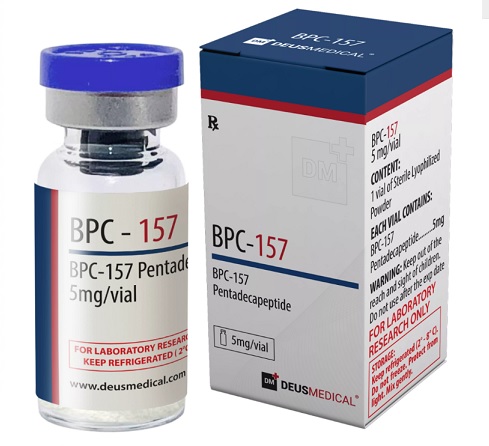
| Website | Price | Shipping |
|---|---|---|
| Deuspower.shop | €39 | Europe |
- Deus Power is a peptide company that provides discreet packaging to avoid common delays when shipping overseas.
- Their European warehouse location enables them to deliver orders to EU customers in just one week.
- Deliveries to non-EU countries can take up to two weeks. If there are any issues with the shipment, they will send another one promptly.
Their BPC 157 is laboratory-tested, and their customer support is helpful via Telegram and email.
Can BPC 157 Improve Erectile Dysfunction?
- Some users report an instant erection upon taking BPC 157, which may be attributed to a surge in dopamine levels.
- Dopamine induces oxytocinergic neurons in the paraventricular nucleus; thus, higher levels may increase sexual function in men.
Other men with injuries to the penis, such as tissue damage from venous leaks, may also benefit from BPC 157 due to its repair and rejuvenation properties on a cellular level. Some BPC 157 users have reported improvements in libido, potentially due to increased dopamine production.
Are BPC 157 Injections More Effective Than Oral Delivery?
Subcutaneous injections are the most optimal way to administer BPC 157 for injuries and isolated pain. Our experience indicates that injections produce the most favorable outcomes among patients.
However, if injections are not preferable, consuming BPC 157 orally remains efficacious for healing and repair, with the peptide exhibiting systemic effects.
- Anecdotally, we have observed oral delivery to be slightly less potent than injections.
- Nonetheless, if BPC 157 is being utilized specifically for its gastroprotective properties, oral consumption could surpass the therapeutic value of injections.
BPC 157 Capsules

Swiss Chems is a US company that formulates BPC 157 capsules at over 99% purity for researchers seeking an alternative method of administration.
We have found oral consumption to be approximately 80%-90% as effective as injectable BPC 157.
10% discount code: inside10
BPC 157 and TB-500
Another peptide that serves as a potent healing agent is TB-500. It is essentially a synthetic version of thymosin beta-4, a protein located in the thymus gland.
In our experience, BPC 157 and TB-500 are similar in effectiveness regarding healing bones, joints, and connective tissue.
Our data suggests TB-500 to be the superior peptide for promoting ancillary strength and muscle development. However, BPC 157 is the more optimal compound for gastrointestinal issues as a result of its extraction from this region.
Can Researchers Stack TB-500 and BPC 157 Together?
Both peptides can be utilized simultaneously for enhanced results, as they possess distinct yet complementary mechanisms for stimulating healing.
TB-500 works systemically and thus does not need to be administered to a specific target. BPC 157, anecdotally at least, appears to display some localized healing effects; therefore, it can be advantageous to inject it closer to the injured area.
What is an Effective Dose of TB-500?
- In research, TB-500 has been administered 1-2 times per week with peak efficacy (8). Additionally, we have found daily doses to be efficacious.
- Our patients administer an identical dose of TB-500 as BPC 157, being 500–1,000 mcg/day.
Below are sample BPC 157 and TB-500 dosages for researchers who want to combine the two peptides.
| BPC 157 dosage | TB-500 dosage |
|---|---|
| 500 mcg/day | 500 mcg/day |
Is BPC 157 Legal?
BPC 157 is legal to purchase in most countries (including the US, Canada, and the UK) for research purposes. This includes administering it to animals and observing its effects.
However, the FDA has not approved it for human use.
- Physicians are increasingly prescribing BPC 157 as an alternative medicine, despite its lack of regulatory approval.
- Thus, BPC 157 is technically legal for human consumption in countries such as the U.S. when issued via a prescription.
As of January 1st, 2022, WADA officially classified BPC 157 as a prohibited substance (9). Therefore, if BPC 157 is to be utilized to accelerate healing from injuries, athletes should confirm with their respective sporting organizations whether they will undergo BPC 157 testing during the off-season.
Conclusion
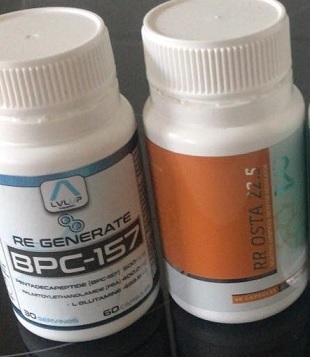
We have found BPC 157 to display numerous positive benefits in terms of healing and rejuvenation (10), combined with few side effects.
Dr. Jeffrey Peng, a sports medicine specialist, asserts that BPC 157 possesses exceptional therapeutic potential due to its “diverse healing mechanisms.” Such benefits relate to:
- Wound healing
- Tissue, muscle, and ligament repair
- Scar tissue
- Neuroprotective health
- Blood flow
- Inflammation
- Muscle degradation
- Immune system modulation
Is BPC 157 Safe?
Although anecdotal reports determine BPC 157 to be a non-toxic peptide with few adverse interactions, further long-term research is required for the FDA to concur with such a notion. Thus, at this time, BPC 157 cannot be clinically defined as safe to use.
Co Authors :
References
(1) https://www.ncbi.nlm.nih.gov/pmc/articles/PMC7096228/
(2) https://pubmed.ncbi.nlm.nih.gov/30915550/
(3) https://www.nature.com/articles/s41420-024-01932-5
(4) https://pmc.ncbi.nlm.nih.gov/articles/PMC10206374/#:~:text=Cabri%20et%20al.-,2021).,2021)
(5) https://pubmed.ncbi.nlm.nih.gov/29898649/
(6) https://pubmed.ncbi.nlm.nih.gov/31158953/
(7) https://pmc.ncbi.nlm.nih.gov/articles/PMC9794587/
(8) https://pmc.ncbi.nlm.nih.gov/articles/PMC2813286/
(9) https://www.usada.org/spirit-of-sport/education/bpc-157-peptide-prohibited/




Does BPC 157 have any effect on regenerating the heart muscle or increasing the performance or ejection fraction?
I have been told Whartons jelly can help ejection fraction. I’m encouraging my mom to try it